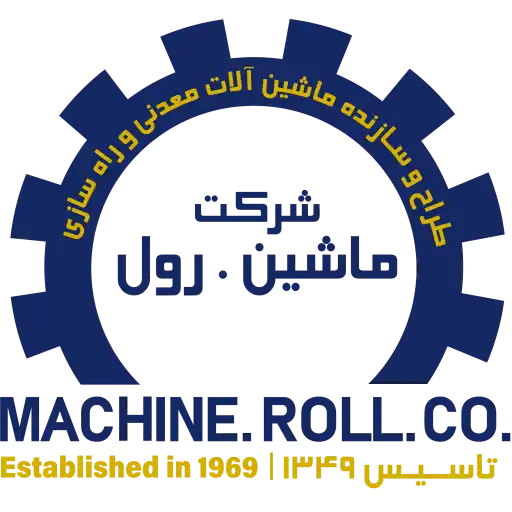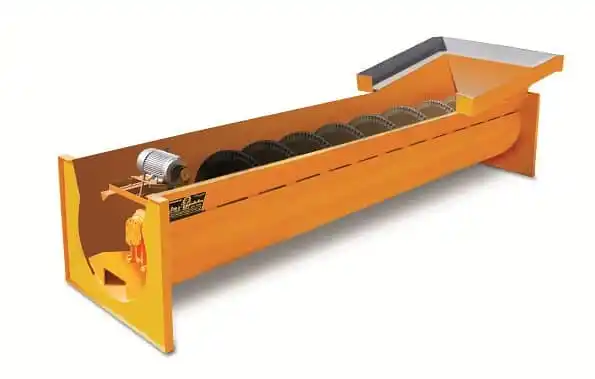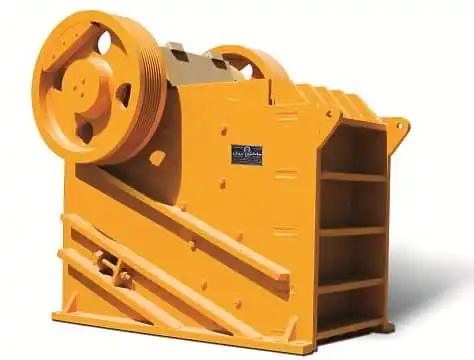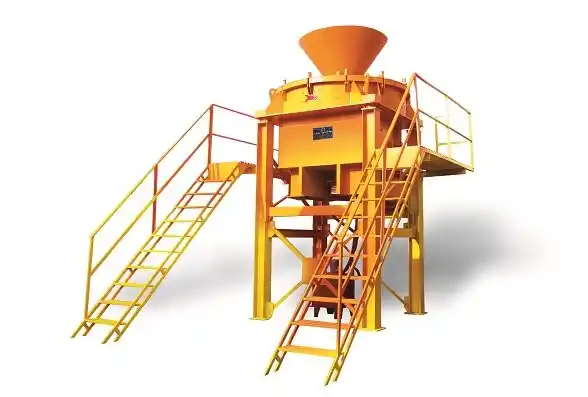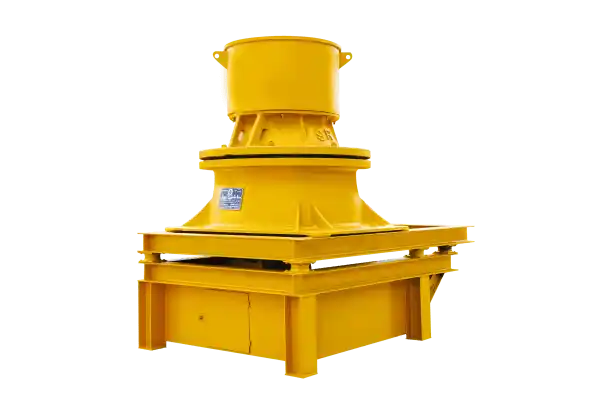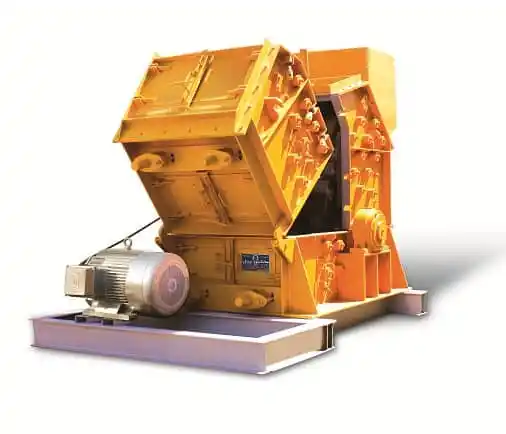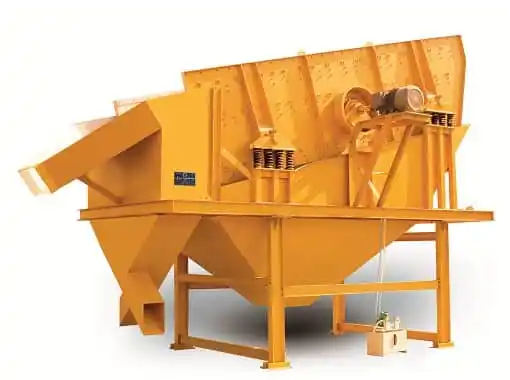What is Spiral sand washer?
A spiral sand washer is an industrial device used to clean and wash construction materials such as sand, gravel, and aggregates. This device is designed as a spiral system in which the materials move and are cleaned along their path through washing and dewatering.
The operation of this device is that, using mechanical force, sand or materials are directed into the device and then moved towards the device’s outlet through a helical screw (cone). In this process, excess materials such as dirt and mud are separated from the materials and finally, the clean and washed materials are directed out of the device.
This device is commonly used in construction industries, concrete production, mining production, and material production plants to aid in the application and process of producing high-quality materials.
The spiral sand washer is one of the important devices in the mining and processing industry, especially in sand and gravel factories. This device is used to wash sand and gravel and separate fine particles from the material. The main applications of the spiral sand washer are:
-
Sand washing: Spiral sand washing uses a stream of water to clean sand from contaminants, dirt, clay, and other fine particles.
-
Fine particle separation: This machine can separate sand and gravel from other finer materials such as clay or mud. This improves the quality of the final product.
-
Reducing material contamination: Using spiral sand washer reduces the amount of contamination in materials and results in higher quality products.
-
Increased productivity: A spiral sand washing machine with the ability to accurately separate particles can increase the efficiency of the production process and optimize water consumption.
-
Mining processing: This device is especially used in sand and gravel mines, soft rocks, and clay mines, and plays an important role in increasing the quality of extracted materials.
In general, spiral sand washing is widely used in the construction industry, concrete and asphalt production, as well as in mines for material processing.
How spiral sand washing works
How a spiral sand washer works: It is designed to effectively separate materials (such as sand, gravel, or aggregates) from impurities, mud, and other contaminants. This device uses a screw and a water washing system to perform the material cleaning process. The following is a step-by-step explanation of how this device works.
-
Material entry into the machine:
- Materials (such as sand and gravel) are fed into the machine through an inlet. These materials are usually extracted from mines or from previous processing stages.
- Materials are typically fed into the machine via a feeder or conveyor system.
-
Starting the washing process:
- After entering the machine, the materials are fed into a washing basin containing water. In this section, the materials are washed with water to remove mud, dirt, and other impurities from the surface of the materials.
- Water is continuously introduced into the machine (usually using a water pump) and excess material is removed from the materials through the water flow.
-
Helical screw rotation:
- The machine has a screw (screw shaft) that is constantly rotating. The screw moves the materials upwards.
- This screw is specifically designed to move the materials from the washing basin to the top of the machine while the washing operation continues.
- The movement of the screw causes the materials to pass through the water evenly and be cleaned of impurities.
-
Mud separation:
- In the process of moving the materials along the screw, impurities (such as mud) move downwards into the washing basin.
- These materials are effectively separated from the materials and directed to the lower part of the device. Finally, the contaminated water, which contains mud and sludge, is discharged from the device.
-
Discharge of washed materials:
- After the materials are thoroughly washed, they are directed to the machine outlet. At this point, the clean materials, whose impurities have been removed, are ready to be used in the next stages of the production process.
- These materials are usually discharged from the machine in dry or wet form and sent to a tank or the next production line.
-
Contaminated water discharge:
- The wash water, which now contains mud, is directed out of the machine through a drain system.
- In some models, this water is recovered for reuse.
-
Draining impurities:
- Mud and other impurities that have accumulated in the bottom of the wash basin are drained separately. Some machines have systems to collect these materials to prevent them from being discharged into the environment.
Important points in the work process:
- Water: Water is essential for effective washing of materials and removal of impurities. In some machines, water is continuously recovered and reused.
- Helical screw: The helical screw used in this machine moves the materials inside the machine and transports them to the top of the machine. This screw must rotate continuously so that the materials are washed evenly.
- Settings: Some devices have the ability to adjust the speed of the auger or the amount of water input, which allows the user to adjust the device’s performance based on the type of material and washing needs.
Benefits of how it works:
- Effective washing: The screw continuously moves the materials, which allows impurities to be effectively removed from them.
- Continuous operation: The machine operates automatically and continuously washes and discharges materials.
Reduced water consumption: Due to water recovery systems, water consumption in these devices is reduced and water resources are used optimally.
Application of spiral sand washer
The spiral sand washer is one of the important devices in the mining and processing industry, especially in sand and gravel factories. This device is used to wash sand and gravel and separate fine particles from the material. The main applications of the spiral sand washer are:
-
Sand washing: Spiral sand washing uses a stream of water to clean sand from contaminants, dirt, clay, and other fine particles.
-
Fine particle separation: This machine can separate sand and gravel from other finer materials such as clay or mud. This improves the quality of the final product.
-
Reducing material contamination: Using spiral sand washer reduces the amount of contamination in materials and results in higher quality products.
-
Increased productivity: A spiral sand washing machine with the ability to accurately separate particles can increase the efficiency of the production process and optimize water consumption.
-
Mining processing: This device is especially used in sand and gravel mines, soft rocks, and clay mines, and plays an important role in increasing the quality of extracted materials.
In general, spiral sand washing is widely used in the construction industry, concrete and asphalt production, as well as in mines for material processing.
Advantages of spiral sand washer
The spiral sand washer has many advantages that have made it widely used in various industries, especially in construction materials processing and mining. Below we will describe some of its most important advantages:
-
Increasing the quality of materials:
- Impurity Removal: Spiral sand washing effectively removes mud, silt, soil, and other impurities from the materials, which helps increase the final quality of the sand and gravel.
- Maintaining the technical properties of materials: Proper washing maintains the technical properties of materials, such as durability, strength, and quality, which are very important for the production of concrete and asphalt.
-
Saving time and money:
- Automatic operation: This machine performs the washing operation automatically, eliminating the need for a lot of labor to manually wash the materials.
- Fast operation: The spiral sand washer operates continuously and without interruption, minimizing the time of the washing process.
-
High resistance and long lifespan:
- Durable materials: Due to the use of wear-resistant and corrosion-resistant materials (such as stainless steel and special alloys) in the construction of the device, the spiral sand washer has a long life and can operate for a long time without problems.
- Resistance to harsh conditions: This device performs well in industrial and harsh environments and is resistant to various conditions such as high humidity, abrasion, and impact.
-
Reducing damage to the environment:
- Water recovery and recycling: Most spiral sand washer models are equipped with water recovery systems that allow water to be reused. This feature helps conserve water resources and reduce environmental pollution.
- Pollution Prevention: Effective sand washing allows contaminants to be separated from the raw materials, which ultimately helps reduce environmental pollution.
-
Optimal performance and high efficiency:
- Effective removal of impurities: The screw is designed with its own movement to effectively remove excess materials from the materials at each stage of washing.
- Reduced water consumption: Many spiral sand washers minimize water consumption, reducing the costs and resources required for the washing process.
-
Variety of applications:
- Use in various industries: Spiral sand washing is used in numerous industries such as concrete production, asphalt production, mineral processing, and mining.
- Adjustable: Spiral sand washers are usually designed to be properly adjusted for different types of materials and specific needs.
-
Minimal maintenance and repairs required:
- Simple structure: The simple design of the device, along with durable parts, reduces the need for repairs and maintenance.
- Long lifespan: Due to the use of high-quality materials and a durable structure, these devices have a long useful life and require fewer parts to be replaced.
-
Reducing production costs:
- High efficiency and optimal energy consumption: The spiral sand washing machine, with its lower energy consumption and high efficiency, helps reduce production costs.
- Reduced washing costs: Due to effective washing and reduced need for additional washing, operating costs are also reduced.
-
Ease of use and installation:
- Simple operation: Users can easily use the device. The user-friendly design of the devices means that they do not require complex training.
- Quick installation: Due to their simple design, installation and commissioning of these devices does not take much time and they can be quickly placed on the production line.
-
Increasing production efficiency:
Increase the speed of the washing process: Due to its continuous and efficient washing ability, the spiral sand washer is able to significantly increase production capacity, which improves production efficiency.
Types of spiral sand washers
Spiral sand washers are designed and manufactured in various types, which have different features and functions depending on the specific need and application. Below are some of the types of spiral sand washers:
1. Single-screw spiral sand washer
- Features: This type of sand washer includes a screw that feeds materials from one side and, after washing, transports them to the other side.
- Application: Suitable for washing sand and gravel with moderate dirtiness and separating fine materials from sand.
- Advantages: Simple design, lower cost, effective operation for low to medium volumes.
2. Multi-scroll screw sand washer
- Features: This machine uses multiple auger screws to increase washing capacity. The screws are arranged in parallel or at different angles.
- Application: Suitable for higher capacities and washing materials with high levels of contamination.
- Advantages: Increased efficiency and capacity, suitable for washing high volume sand and gravel.
3. Spiral sand washer with dewatering system
- Features: This model includes an additional section to separate water from the washed sand. A filter or screen system is usually used to reduce moisture and prevent water loss.
- Application: Suitable for processes that require precise separation of water from sand.
- Benefits: Increased water efficiency and reduced need for water treatment in production processes.
4. Spiral sand washer with fine particle separation system
- Features: In this model, in addition to washing, the machine has additional separation systems to remove fine particles such as mud and clay from the sand.
- Application: Suitable for processing sand that requires precise separation of fine particles.
- Advantages: Higher quality of the final product, increased accuracy in material separation.
5. High capacity spiral sand washer
- Features: These types of devices are designed to work in large mines and material production plants with higher capacities.
- Application: Use in industrial environments and high-production mines.
- Advantages: Capacity and ability to wash large volumes of materials in a short period of time.
6. Adjustable spiral sand washer
- Features: These devices have adjustable settings for the length of the auger and its rotation speed, allowing the user to adjust the device to their specific needs.
- Application: Suitable for applications that require specific settings for different types of materials.
- Advantages: High flexibility and optimization of energy and time consumption.
Important points:
- The choice of type of spiral sand washer depends on production capacity, type of contamination, and the need for precise separation.
- In many models, it is also possible to add additional equipment such as filter devices, dewatering devices, and fine material separation systems, which improves the performance of the device.
These different types allow you to choose the right machine depending on your conditions and needs to achieve the best results from the sand and gravel washing and separation process.
Technical specifications of spiral sand washer
The technical specifications of spiral sand washer can vary depending on the type and model of the device, but in general, these devices have common features that influence their selection and use. Below are the typical technical specifications considered for an spiral sand washer:
1. Machine capacity
- Washing capacity: This characteristic indicates the amount of material that the machine can wash per unit of time. Capacity is usually expressed in cubic meters per hour (m³/h) and can vary from 30 to 300 cubic meters per hour or more, depending on the type of machine.
- Water capacity: The amount of water the machine uses for washing, usually in liters per minute (L/min) or cubic meters per hour (m³/h).
2. Length and diameter of the helical screw
- Screw length: This refers to the overall length of the screw, which can range from a few meters to over 10 meters. Longer lengths mean higher capacity and better washing.
- Screw diameter: The diameter of the screw usually varies between 500 and 1500 mm, and a larger size increases washing capacity and efficiency.
3. Type of power transmission system
- Motor: The motors used are usually electric, with power ranging from 5 to 30 kilowatts (KW) or more. The power of the motor depends on the capacity of the machine and the type of materials being washed.
- Gearbox system: Industrial gearboxes with adjustable speed are usually used to keep the worm screw rotating at the appropriate speed.
4. Material of construction
- Body and Screw: Most worm gear bodies and screws are made of stainless steel or wear-resistant steel to provide high resistance to corrosion and wear.
- Pipes and Water Supply System: Pipes and water delivery systems are also usually made of corrosion-resistant materials.
5. Type of washing system
- Water washing system: For sand and gravel washing, a water spray system or a bottom-up water flow is usually used. Dewatering and separator systems may be added to the machine to reduce moisture and improve efficiency.
6. Screw rotation speed
- Screw rotation speed: The screw rotation speed is usually between 15 and 30 revolutions per minute (rpm), which can be adjusted depending on the type of material and customer needs.
7. Degree of device settings
- Screw angle adjustment: In some models, the screw angle is adjustable, which can be adjusted based on needs to optimize washing and particle separation.
- Adjusting the rotation speed: In advanced models, it is also possible to adjust the rotation speed of the screw, which helps with the accuracy of the washing process.
8. Peripheral systems
- Dewatering system: In some models, additional dewatering systems are included to reduce moisture levels and improve washing efficiency.
- Screens and filters: Screening and filter systems to separate fine particles and dirt are also included in some models.
9. Weight and dimensions
- Device weight: The weight of the device can range from several hundred kilograms to several tons, depending on its dimensions and capacity.
- Overall dimensions: The dimensions of the devices range from a few meters to more than 10 meters in length, depending on the capacity and design of the device.
10. Washing quality and efficiency
- Washing efficiency: The spiral sand washer must be able to effectively remove sand and gravel from fine materials such as clay, dirt, and mud. The washing efficiency can be up to 95% or more.
- Quality of the final product: After washing, the sand must have a minimum level of contamination and be ready for use in various industries.
11. Type and shape of input and output
- Material inlet: The inlet of the device is usually connected to the device in the form of a pipe or channel, and materials enter the device through it.
- Material outlet: The washed sand is discharged from the machine through a pipe or overflow. In some machines, this outlet is connected to storage systems or conveyors.
Based on these specifications, you can choose the right spiral sand washer for your specific needs. The right choice of machine depends on the type of raw material, production capacity, and the need for precise separation.
Spiral sand washer parts
A spiral sand washer consists of various components, each of which has a specific function in the washing and separation process. Below, we will introduce the main parts of a screw sand washer and their roles:
1. Device body
- Function: The body of the device acts as the main framework to hold other components and provides the overall strength of the device. This body is usually made of stainless steel or wear-resistant steel to resist environmental conditions and wear.
- Features: High resistance to corrosion, abrasion and pressure.
2. Helical screw (screw)
- Function: The screw is responsible for transporting materials from the inlet to the outlet. This screw usually has a specific slope that directs the materials forward and along which the materials are washed.
- Features: Screws are usually made of stainless steel or wear-resistant steel. These screws usually come in two types: single-thread and multi-thread.
3. Engine and gearbox
- Function: The motor drives the screw and the gearbox is used to transmit the power of the motor to the screw. The motor is usually electric and its power depends on the capacity of the machine.
- Features: Electric motors with different powers (5 kW to 30 kW or more) are selected depending on the washing capacity requirements. Gearboxes are designed to adjust the screw rotation speed and optimize the machine’s performance.
4. Water transfer system
- Function: The water conveying system is responsible for providing water for washing sand and gravel. Pipes and sprinkler nozzles are usually used to distribute the water, which helps in better washing and more accurate separation of materials.
- Features: The pipes are usually made of corrosion-resistant materials, and the sprinkler system can be evenly distributed throughout the machine.
5. Water collection tray (collection bowl)
- Task: In this section, the water washed from the sand is collected and transferred to the device or storage systems through filtration or return systems.
- Features: This part is usually made of stainless steel or corrosion-resistant materials for longer life.
6. Feeding tank (material input)
- Function: This is where the raw materials (sand and gravel) enter the machine. The tank is usually a channel or pipe that transports the materials to the machine.
- Features: In some models, this section may have a primary screening system to remove larger particles.
7. Material outlet (overflow or outlet pipe)
- Function: This section is where the washed sand exits the machine. The outlet is usually located in the form of a pipe or overflow in the machine.
- Features: This part may be connected to storage systems, conveyors, or other devices to collect the finished product.
8. Filter or sieve
- Function: A filter or sieve is used to separate finer particles and silt from sand. These components can be installed as ancillary systems for more precise separation of materials.
- Features: Sieves usually have different mesh sizes that allow for the separation of particles of different sizes.
9. Gears and power transmission system
- Function: Gears are used to transmit power from the motor to the worm screw. This system usually consists of gears and a set of mechanical parts that operate with high precision.
- Features: Gears are usually made of wear-resistant, high-precision steel.
10. Water extraction system (in some models)
- Function: This system is used to reduce the moisture content of sand after washing. Usually, special filters or pressure systems are used to separate water from sand.
- Features: These systems are usually added to advanced machines to improve efficiency and reduce water consumption.
11. Drain valve
- Function: This part is used to drain excess water and sludge from washing. These materials are directed to the treatment or sewage system.
- Features: Wells usually have filters to reduce contamination and prevent clogging of the system.
12. Regulation and control systems
- Function: Some models have control systems to adjust the speed of the screw rotation, the amount of water used, and other machine settings.
- Features: These systems are usually electronic and can be adjusted manually or automatically.
13. Device base and chassis
- Function: The base and chassis act as the supporting and holding part of the device. This part is usually designed to be sturdy and durable so that the device remains stable during operation.
- Features: Usually made of steel with a stainless steel coating to provide high resistance to environmental conditions.
All of these components are designed together to ensure the proper functioning of the spiral sand washer so that the sand and gravel washing process is carried out effectively and efficiently. Choosing the right quality components has a great impact on the useful life of the machine and the quality of the final product.
Spiral sand washer models and capacities
Designing and manufacturing of spiral sand washers in the dimensions and capacities of the proposed models is possible according to the needs of our esteemed customers. If you wish to inquire about the price, consultation, and purchase of spiral sand washers, please contact the company’s experts through the contact us section.
- 7 meters, model 120
- 7 meters, model 140
- 9 meters, model 120
Price of spiral sand washer
Considering the important factors discussed in the sections described, such as dimensions, capacity, weight, etc., one of the most important factors in choosing a spiral sand washer is the price factor. As we have already mentioned, ordering a device with larger dimensions will also increase the price. It should be noted that due to fluctuations in the price of the dollar and steel products, which are the basis of the raw materials for making a spiral sand washer, it is not possible to determine a fixed and specific price for this device. For information on prices, advice, and ordering auger sandblaster, please contact the company’s experts through our contact section.
